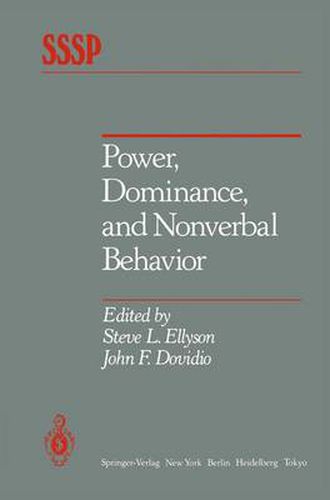Readings Newsletter
Become a Readings Member to make your shopping experience even easier.
Sign in or sign up for free!
You’re not far away from qualifying for FREE standard shipping within Australia
You’ve qualified for FREE standard shipping within Australia
The cart is loading…






This title is printed to order. This book may have been self-published. If so, we cannot guarantee the quality of the content. In the main most books will have gone through the editing process however some may not. We therefore suggest that you be aware of this before ordering this book. If in doubt check either the author or publisher’s details as we are unable to accept any returns unless they are faulty. Please contact us if you have any questions.
The study of nonverbal behavior has substantially grown in importance in social psychology during the past twenty years. In addition, other disciplines are increas ingly bringing their unique perspectives to this research area. Investigators from a wide variety of fields such as developmental, clinical, and social psychology, as well as primatology, human ethology, sociology, anthropology, and biology have system atically examined nonverbal aspects of behavior. Nowhere in the nonverbal behavior literature has such multidisciplinary concern been more evident than in the study of the communication of power and dominance. Ethological insights that explored nonhuman-human parallels in nonverbal communication provided the impetus for the research of the early 19708. The sociobiological framework stimulated the search for analogous and homologous gestures, expressions, and behavior patterns among various species of primates, including humans. Other lines of research, in contrast to evolutionary-based models, have focused on the importance of human developmental and social contexts in determining behaviors associated with power and dominance. Unfortunately, there has been little in the way of cross-fertilization or integration among these fields. A genuine need has existed for a forum that exam ines not only where research on power, dominance, and nonverbal behavior has been, but also where it will likely lead. We thus have two major objectives in this book. One goal is to provide the reader with multidisciplinary, up-to-date literature reviews and research findings.
$9.00 standard shipping within Australia
FREE standard shipping within Australia for orders over $100.00
Express & International shipping calculated at checkout
This title is printed to order. This book may have been self-published. If so, we cannot guarantee the quality of the content. In the main most books will have gone through the editing process however some may not. We therefore suggest that you be aware of this before ordering this book. If in doubt check either the author or publisher’s details as we are unable to accept any returns unless they are faulty. Please contact us if you have any questions.
The study of nonverbal behavior has substantially grown in importance in social psychology during the past twenty years. In addition, other disciplines are increas ingly bringing their unique perspectives to this research area. Investigators from a wide variety of fields such as developmental, clinical, and social psychology, as well as primatology, human ethology, sociology, anthropology, and biology have system atically examined nonverbal aspects of behavior. Nowhere in the nonverbal behavior literature has such multidisciplinary concern been more evident than in the study of the communication of power and dominance. Ethological insights that explored nonhuman-human parallels in nonverbal communication provided the impetus for the research of the early 19708. The sociobiological framework stimulated the search for analogous and homologous gestures, expressions, and behavior patterns among various species of primates, including humans. Other lines of research, in contrast to evolutionary-based models, have focused on the importance of human developmental and social contexts in determining behaviors associated with power and dominance. Unfortunately, there has been little in the way of cross-fertilization or integration among these fields. A genuine need has existed for a forum that exam ines not only where research on power, dominance, and nonverbal behavior has been, but also where it will likely lead. We thus have two major objectives in this book. One goal is to provide the reader with multidisciplinary, up-to-date literature reviews and research findings.